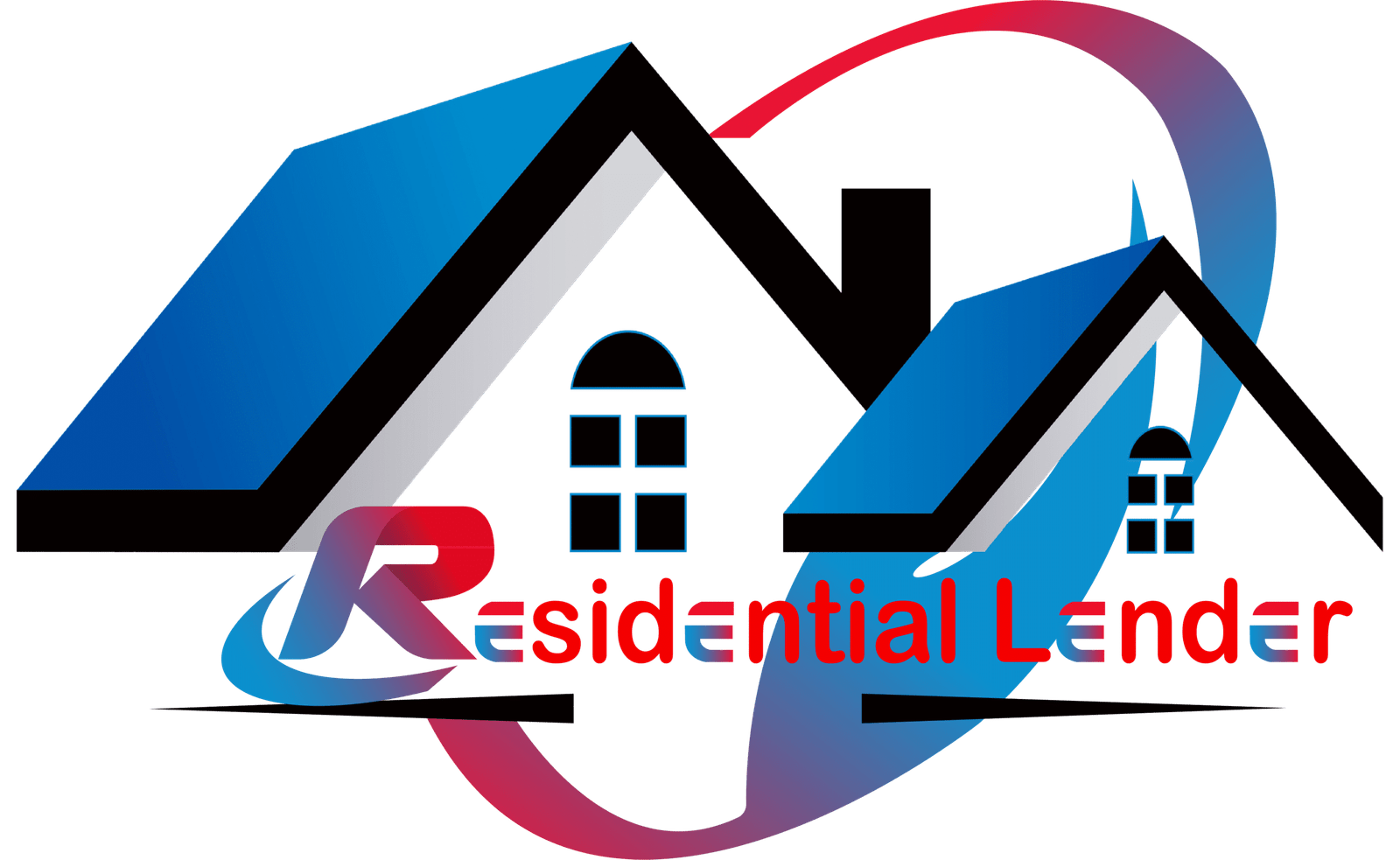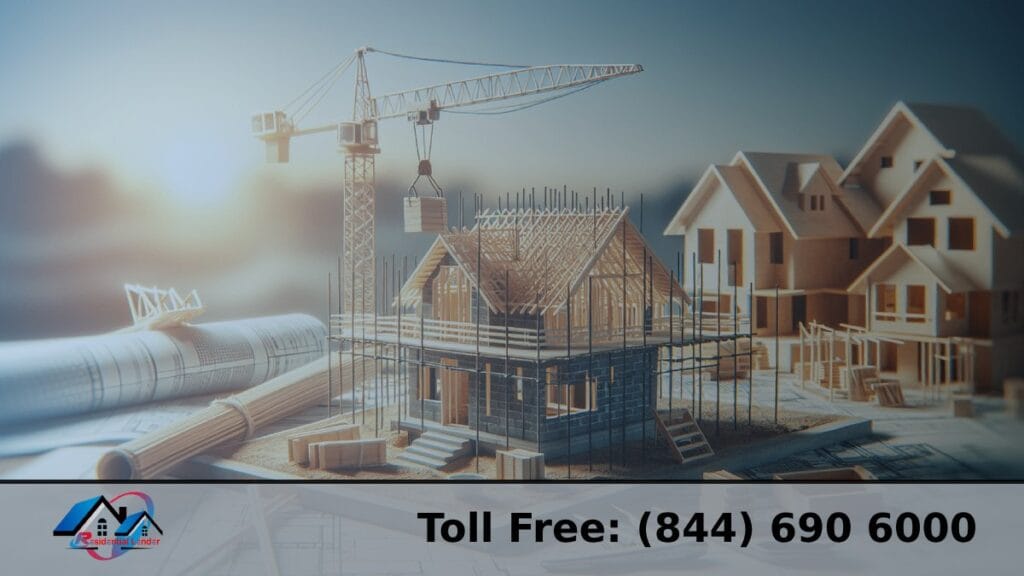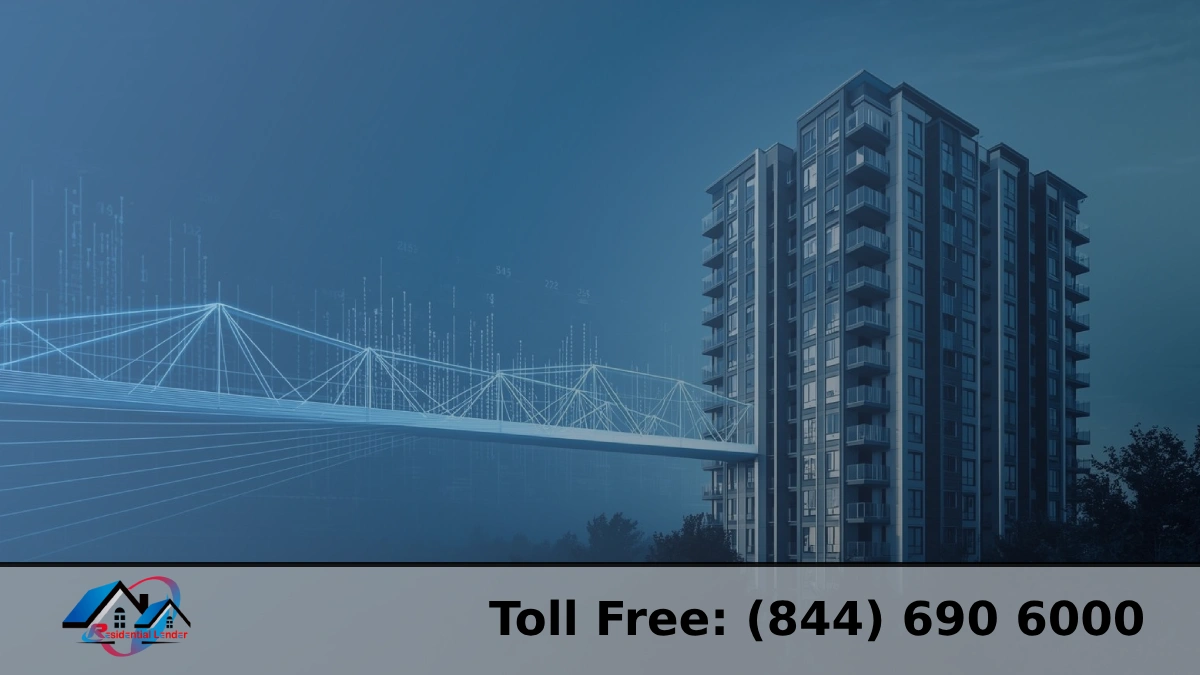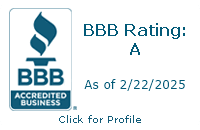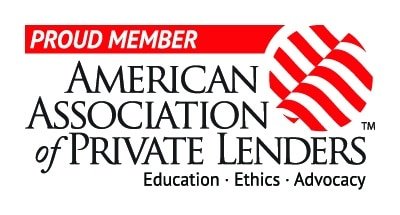Many copies of the plans for your new rental home are out there. They’re easy to see, and the money you could make is making your mind dance. Then, the money truth comes out.
Knowing about new construction loan rates is essential because the cost of financing a building project can significantly affect your income.
Getting credit for a new building is more complicated than getting credit for an old one, and the rates are sometimes higher.
This blog aims to make getting reasonable rates on new construction loans more straightforward and valuable.
ResidentialLender.Net has been approving loans for 30 years and has an extensive network of more than 200 private lenders. Like a straight-table lender, it also works with other lenders. You can get help with this tricky thing from ResidentialLender.Net.
Understanding the Landscape of New Construction Loan Rates
To navigate the world of new construction loans, you must know what makes them different and how other factors affect their interest rates. When you build from scratch instead of buying an existing property, you have to finance it in stages, and lenders are exposed to different amounts of risk.
What Exactly is a New Construction Loan?
A new construction loan is a short-term loan only used to build a new home. It differs from a typical debt used to buy an existing building. A standard mortgage gives you a lump sum when the deal is done. On the other hand, a construction loan usually has a draw schedule that lets you get the money in stages as the building goes up and specific goals are met.
Usually, a new construction loan goes through the following stages:
- Acquisition: Getting the money to buy the land if you don’t own it.
- Construction: Giving money to pay for the building process, including permits, labor, and supplies.
- Permanent financing means turning the short-term loan for the building project into a long-term debt when the job is done. A common way to do this is to refinance into a standard mortgage product.
These loans can be used for private investment properties, such as single-family homes built to rent or sell, apartment buildings with multiple units, and mixed-use developments that include homes.
Factors Influencing New Construction Loan Rates
The interest rates on new construction loans depend on several important factors, including:
Conditions of the economy as a whole and interest rates at the time: Rates on all loans, including new construction loans, are highly affected by the state of the economy and the interest rates that central banks have set. Most of the time, when benchmark rates go up, so do building loan rates.
- The Name of the Lender: Rates offered by different types of loans can be affected by how willing they are to take risks and how much it costs to get money. Private lenders, credit unions, and banks have rules and ways of setting prices. Private lenders may charge more than a regular bank, but they give you more freedom.
- How Creditworthy the Borrower Is: Your cash situation is critical. To determine how risky it is to lend you money, lenders will consider your credit score, debt-to-income (DTI) ratio, and general financial stability. Often, better interest rates come with a higher credit score and a lower DTI.
- Details about the project: The details of your building project are essential. The location, size, and complexity of the property, as well as the expected length of time needed for building, can all affect how risky it is seen to be and, by extension, the interest rate. A project that takes longer or is more complicated is risky.
- Loan-to-Value (LTV) and Loan-to-Cost (LTC) Rates: They match the loan amount to either the total cost of the project (LTC) or the property’s appraised value (LTV). Higher LTC and LTV ratios mean that a more significant part of the project is being funded, which can increase interest rates because the lender is taking on more risk. Like, a loan for 80% of the total project cost (LTC of 80%) is usually riskier for the lender than a loan for 70% of the total project cost.
- Interest rate: Most of the time, you can choose between a set or variable interest rate. Fixed rates don’t change during the loan period, so payments are always the same, but might start at a higher rate. Variable rates change based on the state of the market. They can be cheaper at first, but there is a chance that they will go up in the future. The total cost of borrowing will depend on which one you choose.
Key Strategies to Improve Your New Construction Loan Rates
Getting reasonable interest rates on your new construction loan is crucial to maximizing your investment. You can get better terms if you improve essential parts of your financial picture, compare lenders carefully, learn how loans work, and ensure all the project details are perfect.
Strengthen Your Financial Profile
When lenders set interest rates, they consider your financial health one of the most critical factors. A strong financial background means you are a lower-risk borrower, and better loan terms can be offered.
Improve Your Credit Score
Your credit score is a number that shows how creditworthy you are. It will affect the credit rates you’re offered. A higher credit score makes you less of a risk to lenders because it shows you have a history of responsibly borrowing and paying money back. A slight increase in your credit score can save you a lot of money over the life of the loan.
Actionable Tips:
- Pay your bills on time: Regularly paying is key to a good credit score. To avoid forgetting, set up automatic payments or alerts.
- Lower Your Credit Card Balances: Too much credit card debt compared to your credit limit can hurt your score. Pay off your balances as quickly as possible so they don’t exceed 30% of your credit line.
- Get rid of mistakes on credit reports: Look over your credit reports from Equifax, Experian, and TransUnion to see if there are any mistakes. If you find any errors, you should dispute them because they can lower your score.
Lower Your Debt-to-Income Ratio
The debt-to-income (DTI) ratio shows how much of your gross monthly income is used to pay off your debts. It considers all your monthly payments, such as the possible payment on a new construction loan. Lenders use DTI to figure out if you can afford your monthly bills. If your DTI is smaller, you make more money than you spend, making you a safer borrower.
Suggested Strategies:
- Pay Off Existing Debts: Your priority should be to pay off other debts, like school loans, car loans, or smaller credit card balances. This will lower both your DTI and the monthly debt you must pay.
- Increase Your Income (If Possible): Find ways to make more money. This could mean getting a second job, requesting a pay raise, or looking for a new job. If you have the same debt and more income, your DTI will decrease.
Increase Your Down Payment
The down payment is the money you put toward the whole project. A more significant down payment means you must borrow less money, lowering the provider’s risk. The Loan-to-Cost (LTC) and Loan-to-Value (LTV) numbers clearly show this. When you put down more money, the LTC and LTV go down. This makes the loan less risky for the lender, which usually means better interest rates. Making a significant personal investment in the project also shows that you’re committed and lowers the chance of failure.
Shop Around and Compare Lenders
It’s essential to shop around and compare deals from different lenders, just like you would when looking for materials or contractors. Don’t accept the first price that comes your way. There are significant differences between banks in terms of interest rates, fees, and loan terms. You might want to look into choices from
- Traditional Banks. They usually have reasonable rates, but their approval requirements can be strict.
- Credit unions might offer better terms and lower fees to people who join.
- Private lenders: Their terms may be more flexible, and they may be more ready to fund high-risk projects. However, their rates may be higher.
- Correspondent lenders, such as ResidentialLender.Net, make loans and ensure their quality by using their own money and a network of other lenders. With 30 years of experience and a network of over 200 private lenders, ResidentialLender.Net can offer more choices and better rates than a single institution. Their ability to be both a table and a correspondent lender offers more funding options.
When comparing lenders, be sure to ask specific questions about:
- Rate of Interest: Find out the original rate and whether it’s fixed or changes over time.
- Fees: Know all the expenses associated with the deal, such as the purchase fee, the appraisal fee, the closing costs, and any draw fees that may arise during the building phase.
- Loan Terms: Make it clear how long the loan is for, when it’s due, and if there are any fees for paying it off early.
Understand Different Loan Structures
Learning about the different types of loan structures can help you make choices that lower your initial costs or better suit your project’s schedule.
Interest-Only Payments During Construction
You can make interest-only payments on some construction loans while the work is still being done. This means you only have to pay the interest on the money already sent to you. This means that your first monthly payments will be lower than if you had to pay the debt and the interest. This can help with cash flow while the work is being done. It’s important to know that once the building is done, the loan will usually become a permanent mortgage with higher payments for both the capital and the interest.
The Importance of Permanent Loans
When the project is over, the “take-out” loan, also called permanent financing, will replace your short-term building loan as your long-term mortgage. You should discuss and negotiate the terms of your long-term loan as soon as possible during the building process. Getting good terms on your permanent financing upfront can help you know exactly how much your long-term costs will be. It may also affect the terms of your initial building loan.
Exploring Commercial Loan Options
Consider looking into commercial loan choices for mixed-use or multi-family residential properties. Rates and requirements for getting a commercial loan often differ from those for domestic loans. Learning about the terms and conditions of business loans could help you get better financing in other ways, especially for more significant investment projects.
Optimize Your Project Details
Lenders may trust you more if you show them a well-organized and realistic project plan. This could lead to better interest rates.
Develop a Detailed and Realistic Budget
Lenders will see that you have a realistic and thorough budget that shows you know how much the job will cost and can manage it well. Include detailed breakdowns of how much the materials, labor, permits, and other costs you expect to incur will cost. Including a contingency fund, usually 10-15% of the total budget, is also essential to cover any unplanned costs or delays. A well-thought-out budget lowers the risk that costs will go over budget, which can positively affect the interest rate.
Present a Solid Construction Timeline
A clear and attainable building schedule lowers the lender’s concern about delays and costs. Write down the essential steps in your project and when you think they will be finished. A realistic schedule shows lenders that you plan to finish the project quickly, reducing the time their money is at risk.
Choose an Experienced and Reputable Contractor
Lenders often look at the general contractor’s knowledge and track record. They are less worried about quality or time delays when the contractor has a past of finishing projects successfully and on time. Prepare details about your contractor’s credentials, licensing, and references to give them. Using a trustworthy contractor can make your project plan more convincing and may help you get a better interest rate.
Working with a Loan Officer to Secure Better Rates
A loan officer who knows much about new construction loans can help you get through tough times and achieve. They will help you understand the complicated funding process and then work to get you the best rates and terms.
For 30 years, ResidentialLender.Net has been reviewing loans, so they know everything there is to know about getting loans to build homes for investment properties. They know a lot about loans and can help you the most. A good loan officer can be invaluable in many vital areas, such as
- Rates and Loan Products: They will clearly explain the different new construction loan products available, their structure, and the difference between fixed and variable interest rates. They will also help you determine how these things fit your financial goals and risk tolerance.
- Fee flexibility: A good loan officer will show you all your payments in detail. Hence, you know how much it costs to borrow besides the interest rate. The evaluation, the closing, and any draw fees that might come up are all covered by this.
- Help me with the application process. Getting a building loan involves more steps than a regular mortgage. A loan officer can help you obtain the information you need and ensure you fill out the application correctly, speeding up the process and improving it overall.
- Talking to possible lenders: A loan worker with extensive experience can help you talk to lenders because they know the market well. This is very helpful if you’re working with ResidentialLender.Net, a lender with a vast network of over 200 private lenders who can give you better terms and more choices.
- Finding Possible Problems Early and Solving Them: A loan worker with extensive experience can help you find solutions to problems that arise during the screening process before they cause delays. In this way, your chances of getting the loan go up.
- Advice on paying for a construction project: Working with a loan officer specializing in construction loans is essential when buying rental homes. They will learn more about these loans, such as when they can be used, the inspection requirements, and how the fixed and construction loans work together. Their knowledge can help you get words that work for your job.
Exploring Alternative Construction Financing Options
Traditional bank financing is one way to pay for new construction, but other options exist. Each has its rate structure and may be better for you based on your situation and project goals. Knowing about these alternatives can give you more freedom and help you find better financial options that fit your needs.
Bridge Loans are short-term loans often used to help people through the time it takes to sell their current home and buy or build a new one. They let you get money quickly, but the interest rates are usually higher because they are short-term and come with more risk.
Hard Money Loans: Real estate investors often use these loans based on assets for fix-and-flip projects or when they need money quickly. Because they involve more risk and can be funded quickly, they usually have much higher interest rates and fees than regular loans.
DSCR (Debt Service Coverage Ratio) Loans: The cash flow the finished property should bring is used to decide who gets these loans. Interest rates on DSCR loans depend on how much money the property is expected to bring in and how well it can pay its debts. Rates may be better for properties that bring in more cash flow.
SBA (Small Business Administration) Loans: Small business owners who are also real estate buyers may get better interest rates and terms on SBA loans (like the 7(a) or 504 programs) than on other types of loans. However, the standards to get them are usually stricter, and the application process takes longer.
FHA Commercial Property Investment Loans: The Federal Housing Administration (FHA) has loan programs for certain kinds of commercial properties, such as apartments. The interest rates and terms on these loans are sometimes less strict. Still, they usually have specific rules about the client and the property.
USDA (United States Department of Agriculture) B&I (Business & Industry) Loans: In some rural areas, USDA B&I loans can be used to pay for business projects, such as building homes. These loans may come with low interest rates. To help these places’ economies grow
No-Doc/Lite-Doc/Stated Income Loans: Traditional loans require more paperwork, but these loans are based on the borrower’s income or the property’s potential instead. Because lenders are taking on more risk, they usually come with much higher interest rates and fees.
Remember that the “best” way to finance your construction project and its interest rate will depend on your finances, project specifics, risk tolerance, and access to different lenders and programs. Before deciding, you should consider each choice and compare the borrowing costs, such as fees, interest rates, and loan terms.
The Impact of Market Conditions on New Construction Loan Rates (Current Trends)
On 17 April 2025, interest rates in the US are affected by many economic factors. The Federal Reserve lowered interest rates several times in late 2024. Since early 2025, the rate has stayed between 4.25% and 4.5%. New economic forecasts say that this year’s growth will be slow, and core inflation will be a little higher. In late 2025, the Federal Reserve plans to lower interest rates slowly. However, the exact date and amount of these cuts are still unclear. They will use fresh economic information, mainly information about jobs and prices.
Rates on loans for building projects are changing right now for several reasons. This is a big worry for lenders, even though inflation has slowed slightly. Rate drops might not happen as soon as planned if the economy does better than expected. This would mean that interest rates stay high. The Federal Reserve may drop interest rates if there are signs that the economy is slowing down. This would help growth. When it comes to interest rates and quantitative tightening, the Federal Reserve’s policies have a direct effect on how much it costs lenders to borrow money. This shows up in lenders’ rates for people who want to borrow money.
People who want to get new construction loans need to keep up with the changes in the market because it is constantly changing. Interest rate trends can change, so monitoring things like the Consumer Price Index (CPI), job rates, and GDP growth is essential. It’s important to keep in touch with your loan officer, ideally one who specializes in construction loans, like the ones at ResidentialLender.Net. They can give you the most up-to-date rates and discuss what might happen. They can also help you figure out when to get a loan.
ResidentialLender.Net: Your Partner in Securing Competitive New Construction Loan Rates
ResidentialLender.Net only deals with homes that are being bought as investments. Because of this, we are focused and know much about how to help you finance your new building. We have an advantage because we are both a straight and a correspondent table loan. Because we can directly approve and fund loans and have access to a vast network of over 200 private lenders and investors, you have a lot more options for getting money. You are more likely to be able to get excellent rates.
Because we’ve been in the underwriting business for 30 years, we know how to deal with the complicated parts of construction loans and help you find the best solutions for your project. We help with many projects, like building single-family homes, apartment buildings, and places that can be used for many things. We also have referral programs for traders who want to help their clients find safe funding. These programs are either exclusive or not exclusive. Don’t guess if your plan will make money or not. Call ResidentialLender.Net right now to get personalized help. Use what we know to help you get the best rates on a loan for a new building.
Conclusion
For loans for your new construction project, it is possible to get fair interest rates. If you improve your finances, carefully study and compare lenders, learn about the different types of loans, and ensure all your project details are perfect, you can significantly affect the terms you get. Don’t forget how important it is to get ready. Remember that getting help from people who have done it can be beneficial. You can quickly get the money you need to buy homes and hit your investment goals if you take the initiative and don’t wait.
FAQs
How long does the approval process for a new construction loan typically take compared to a regular mortgage?
For the most part, getting a new construction loan approved takes longer than getting a regular mortgage. Getting a mortgage can take anywhere from 30 to 45 days, but getting a building loan can take 60 to 90 days or even longer. This is because of the extra due diligence that needs to be done, such as a thorough look at the building plans, budget, contractor qualifications, and property value when it is finished.
What happens to my construction loan once the building is finished?
When the building phase is over, your short-term construction loan needs to be changed into long-term financing, which is usually called a “take-out loan” or a regular mortgage. This is generally done by refinancing, which means applying for and getting a new mortgage with a longer term that pays off the building loan. Early in the building process, it’s a good idea to start discussing and securing terms for this long-term funding.
Are any specific requirements or inspections involved during the construction loan draw process?
Yes, construction loans usually have a draw plan that lets the money out in stages as specific building goals are met. A third-party appraiser or inspector is generally needed before the lender releases each draw to ensure the work is done according to the accepted plans and budget. These checks protect the lender’s money and ensure the project goes as planned.
Can I finance the purchase of the land and the construction costs with a single new construction loan?
If you don’t own the land, you can often get a loan to cover the cost of building the house and buying land. This is usually set up so that there is an initial draw to pay for the land and subsequent draws as the building goes on. Some lenders might need different financing for the land purchase.
What risks are associated with a new construction loan for a residential investment property?
There are several risks associated with loans for new buildings. Some of these are construction delays that make interest payments last longer, cost overruns that exceed the loan amount, the property’s appraised value being lower than expected, which limits permanent financing options, and the general risks of investing in real estate, like changes in the market and high vacancy rates. These risks can be lessened by carefully planning, sticking to a budget, and hiring a worker with a lot of experience.
